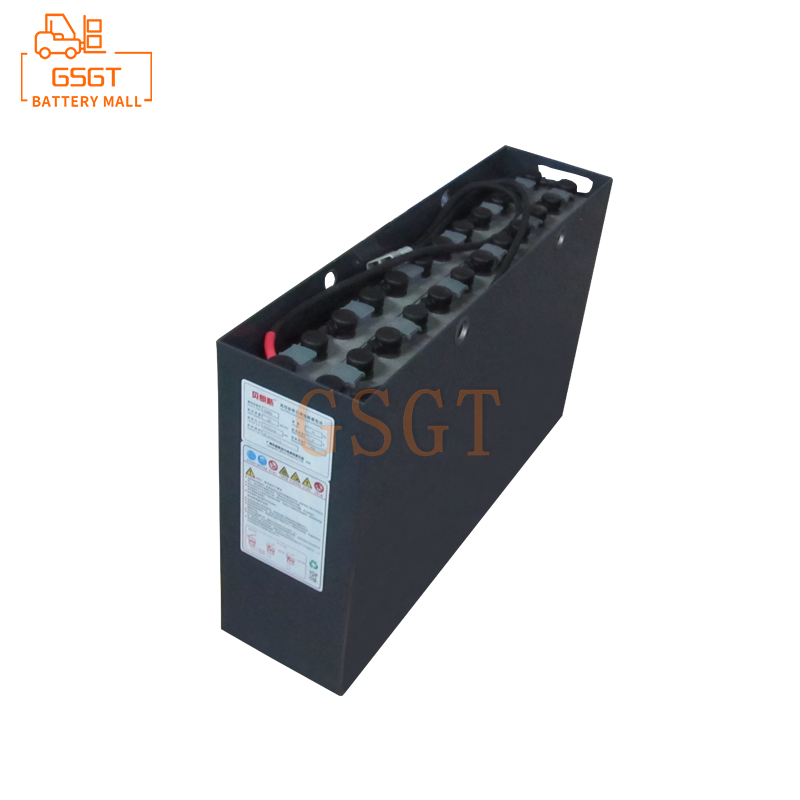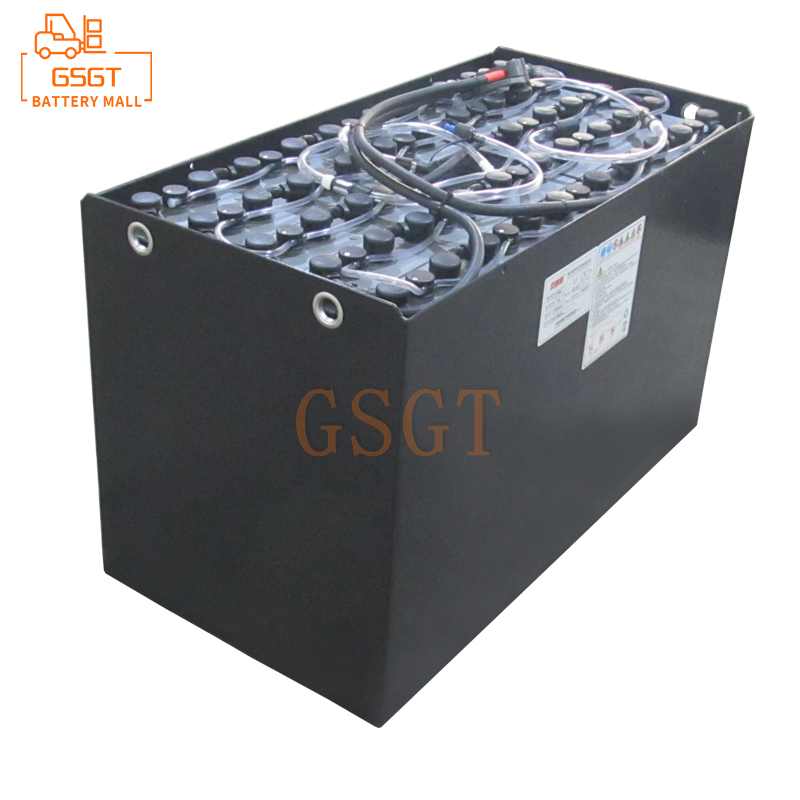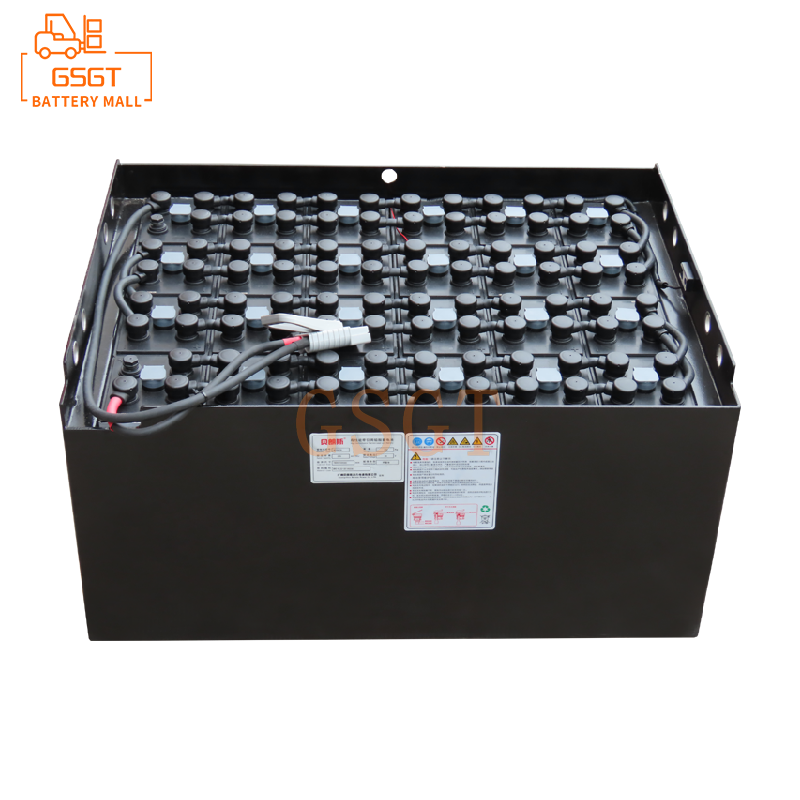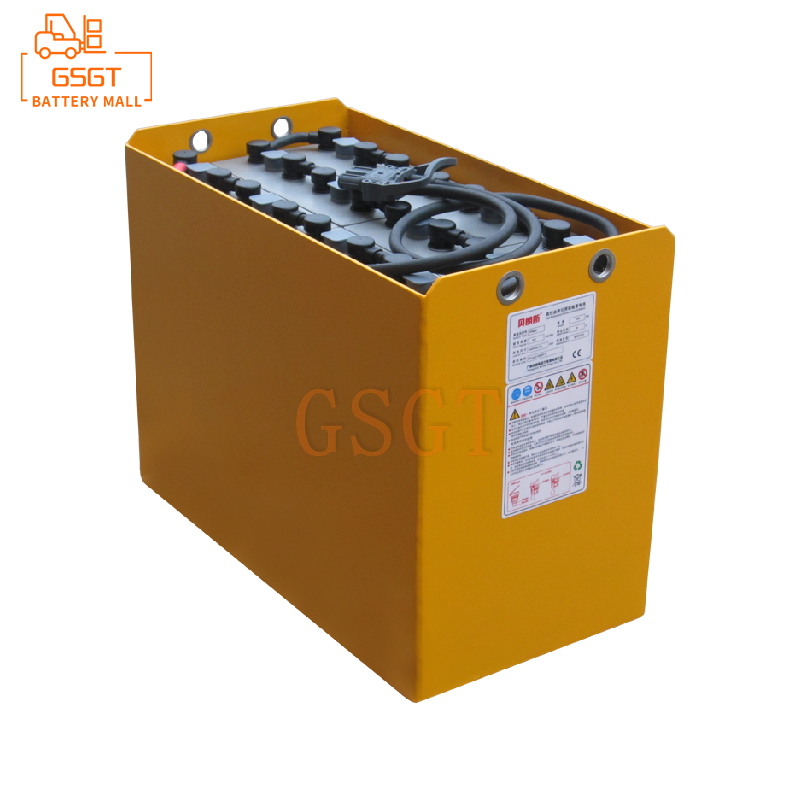Time:2025-06-14 10:32:33
Browse:587
Abstract
This article focuses on the problem of lead-acid battery depletion in forklifts, deeply analyzes its causes, systematically expounds the principles of repair techniques, and combines practical application cases to discuss the advantages and disadvantages as well as applicable scenarios of different repair methods. It aims to provide comprehensive and practical technical references for the repair of lead-acid batteries in forklifts, helping enterprises reduce equipment maintenance costs, and increase battery service life and utilization efficiency.
1. Introduction
In the field of modern industrial logistics, forklifts, as important handling equipment, are widely used in warehouses, factories and other places. Lead-acid batteries have become the main power source for forklifts due to their advantages such as low cost, mature technology and good high-current discharge performance. However, the working environment of forklifts is complex and they are frequently used, which leads to lead-acid batteries being prone to discharge problems. Battery depletion not only affects the normal operation of forklifts, but frequent battery replacement also significantly increases the operating costs of enterprises. Therefore, researching and mastering the repair technology of lead-acid batteries for forklifts is of great practical significance for improving the working efficiency of forklifts and reducing the operating costs of enterprises.
2. Analysis of the Causes of Battery Depletion in ForkLifts with Lead-Acid Batteries
(1) Excessive discharge
During the long-term continuous operation of a forklift, if it is not charged in time, the battery will continue to discharge until the power is exhausted. Excessive discharge can cause the active substances on the battery plates to overreact, leading to sulfation of the plates and thereby reducing the battery's capacity and performance. For instance, during some peak logistics periods, forklifts may operate continuously for several hours without being charged to meet the demands of goods handling. In such cases, excessive discharge is likely to occur.
(2) Insufficient charging
Factors such as malfunction of charging equipment, insufficient charging time or unreasonable setting of charging parameters may all lead to insufficient battery charging. If the battery plates remain in a state of insufficient charging for a long time, the active substances on them cannot be fully reduced and will gradually form irreversible sulfation, affecting the battery's charging and discharging capabilities. For instance, if the voltage regulator of a charging device is damaged and unable to provide an appropriate charging voltage, it will result in insufficient charging. (3) Electrolyte issues
Drying up or abnormal density of the electrolyte is a common problem. During the operation of a forklift, due to reasons such as vibration, electrolyte leakage may occur. Meanwhile, during the charging and discharging process of the battery, the water in the electrolyte will gradually evaporate. If distilled water is not replenished in time, it will cause the electrolyte to dry up. If the density of the electrolyte is too high or too low, it will affect the electrochemical reactions inside the battery, and subsequently lead to battery depletion.
(4) Battery aging
Lead-acid batteries have a certain service life. As the usage time increases, the active substances on the battery plates will gradually decrease, and the internal components such as the separators and plates will also gradually age, resulting in a decline in battery capacity and the occurrence of battery depletion. Generally speaking, the service life of lead-acid batteries in forklifts is about 2 to 3 years. However, if they are not used and maintained properly, their service life will be significantly shortened.
3. Principles of Forklift Lead-Acid Battery Repair Technology
(1) Principle of Plate vulcanization Repair
Plate sulfation is one of the main reasons for the undercharge of lead-acid batteries. The repair principle is to adopt high-frequency pulse repair technology. By using the instantaneous high voltage generated by high-frequency pulses, the lead sulfate crystals on the surface of the plates are broken, and they are reconverted into active substances. High-frequency pulses can cause lead sulfate crystals to vibrate and dissolve under the action of an electric field, thereby restoring the activity of the plates and increasing the battery capacity.
(2) Principle of Electrolyte Repair
In cases where the electrolyte dries up, it is necessary to replenish an appropriate amount of distilled water or a dedicated lead-acid battery repair solution. Distilled water can replenish the evaporated water in the electrolyte, restoring the electrolyte to its normal liquid level and concentration. In addition to water, the repair solution also contains some additives. These additives can improve the performance of the electrolyte, promote the electrochemical reaction inside the battery, and help repair the battery. In cases where the density of the electrolyte is abnormal, it is necessary to adjust the density of the electrolyte according to the actual situation to bring it within an appropriate range.
(3) Activation and Repair Principle
Activation and repair are carried out through special charging and discharging methods to activate the "dormant" active substances on the battery plates. Usually, a cycle of charging and discharging with a small current for a long time and a large current for a short time is adopted to enable the active substances on the plates to participate in the electrochemical reaction again and restore the performance of the battery. This repair method can effectively improve the charging and discharging efficiency and capacity of the battery.
4. Common Repair Methods for Lead-Acid Batteries in Forklifts
(1) Pulse repair method
1. ** Equipment and Operation ** : Use a dedicated lead-acid battery pulse repair instrument. Correctly connect the positive and negative terminals of the repair instrument to those of the undercharged battery, and set appropriate repair parameters, such as pulse frequency and pulse width. The general repair time depends on the degree of battery depletion and capacity, usually ranging from 12 to 72 hours.
2. ** Advantages and Disadvantages ** : The advantage is that it has a good repair effect, can effectively remove sulfation of the plates, and increase the battery capacity; It does not damage the battery plates and has a relatively small impact on the battery's service life. The drawback is that the repair time is relatively long and the price of the repair instrument is relatively high. For severely sulfated batteries, multiple repairs may be required to achieve the desired effect.
3. ** Applicable Scenarios ** : It is suitable for the repair of forklift lead-acid batteries with a relatively mild to moderate degree of sulfation on the plates.
(2) Hydration and repair method
1. ** Equipment and Operation ** : Prepare distilled water or special repair solution, droppers, syringes and other tools. Open the upper cover of the battery and observe the liquid level of the electrolyte. If the liquid level is below the lowest mark, use a dropper or syringe to slowly inject distilled water or repair solution into the battery until the liquid level reaches the appropriate range. After injection, let it stand for a period of time to allow the electrolyte to fully penetrate, and then proceed with normal charging.
2. ** Advantages and Disadvantages ** : The advantages are simple operation and low cost; It can effectively solve the problem of battery depletion caused by the drying up of the electrolyte. The drawback is that for battery undercharge caused by other reasons, such as sulfation of the plates and battery aging, the repair effect is not obvious. If too much water is added, it may cause the electrolyte to overflow, corroding the battery and other components of the forklift.
3. ** Applicable Scenarios ** : Mainly applicable to the repair of forklift lead-acid batteries with dried electrolyte.
(3) Equalization charging repair method
1. ** Equipment and Operation ** : Use a charger with equalization charging function. Connect the undercharged battery to the charger and select the equalization charging mode. The charger will charge the battery for a long time at a lower current and a higher voltage. The general equalization charging time is 8 to 12 hours.
2. ** Advantages and Disadvantages ** : The advantage is that it can make the voltage and capacity of each individual battery inside the battery tend to be consistent, solving the problem of battery depletion caused by the imbalance of individual batteries in the battery pack. The operation is relatively simple and does not require special equipment. The drawback is that for batteries that have severely aged or been damaged, the problem cannot be fundamentally solved. Long-term high-voltage charging may accelerate the aging of the battery.
3. ** Applicable Scenarios ** : It is applicable to the repair of forklift lead-acid batteries that are discharged due to unbalanced voltage or capacity of individual cells in the battery pack.
(4) Chemical repair method
1. ** Equipment and Operation ** : Prepare the dedicated chemical repair agent for lead-acid batteries. Open the upper cover of the battery, inject an appropriate amount of chemical repair agent into the battery, and then carry out a normal charge and discharge cycle. Chemical repair agents will undergo chemical reactions with the substances inside the battery to improve its performance.
2. ** Advantages and Disadvantages ** : The advantage is that it can improve the performance of the battery to a certain extent and has a good repair effect on some battery depletion problems caused by abnormal chemical reactions. The drawback is that the composition of the chemical repair agent is complex and may cause certain corrosion to the battery. The effects of chemical repair agents from different brands and models vary greatly. Improper selection may affect the repair outcome.
3. ** Applicable Scenarios ** : It is suitable for the repair of forklift lead-acid batteries that have been discharged due to abnormal chemical reactions inside the battery, but the chemical repair agent needs to be carefully selected.
5. Precautions for Repairing Lead-Acid Batteries in Forklifts
(1) Safety Protection
During the repair process, protective gloves, goggles and other protective equipment should be worn to prevent the electrolyte from splashing onto the skin and eyes. In case of accidental contact with the electrolyte, rinse immediately with plenty of water and seek medical attention promptly. At the same time, the repair site should be well-ventilated to prevent the accumulation of hydrogen gas produced during battery charging from causing dangers such as explosions.
(2) Correct operation
Operate strictly in accordance with the instructions for the repair equipment and tools to ensure the accuracy and safety of the repair process. When connecting the battery and repairing the device, pay attention to the correct connection of the positive and negative poles to avoid short circuits. For unfamiliar repair methods and equipment, do not operate blindly. Instead, learn and understand them first.
(3) Inspection after repair
After the repair is completed, a comprehensive inspection of the battery should be carried out, including the detection of indicators such as voltage, capacity, and electrolyte density. Only when all the indicators meet the requirements can the battery be put back into use. At the same time, the repaired battery should be tracked and observed to understand the changes in its performance and lifespan.
6. Conclusion
The undercharge of lead-acid batteries in forklifts is a common and significant issue. By thoroughly understanding the causes of the undercharge, mastering the corresponding repair technical principles and methods, and choosing the appropriate repair approach based on the actual situation, the undercharged batteries can be effectively repaired, thereby enhancing the battery's service life and efficiency. During the repair process, safety precautions must be strictly followed to ensure the safety and smooth progress of the repair work. With the continuous development of technology, the repair technology of forklift lead-acid batteries will also be constantly innovated and improved, providing more powerful support for the development of the industrial logistics field.

$1060

$3050

$5710

$1690

MESSAGE
Professional And Efficient
Security
Affordable Price
Professional Services